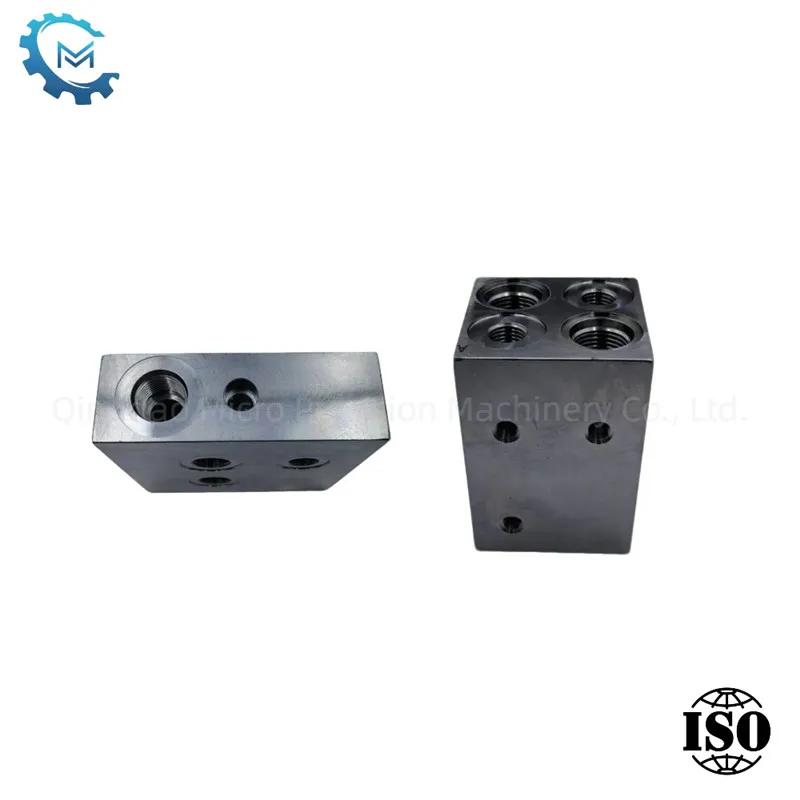- English
- Español
- Português
- русский
- Français
- 日本語
- Deutsch
- tiếng Việt
- Italiano
- Nederlands
- ภาษาไทย
- Polski
- 한국어
- Svenska
- magyar
- Malay
- বাংলা ভাষার
- Dansk
- Suomi
- हिन्दी
- Pilipino
- Türkçe
- Gaeilge
- العربية
- Indonesia
- Norsk
- تمل
- český
- ελληνικά
- український
- Javanese
- فارسی
- தமிழ்
- తెలుగు
- नेपाली
- Burmese
- български
- ລາວ
- Latine
- Қазақша
- Euskal
- Azərbaycan
- Slovenský jazyk
- Македонски
- Lietuvos
- Eesti Keel
- Română
- Slovenski
- मराठी
- Srpski језик
What are the design principles of valve blocks?
2025-02-19
The design of hydraulic valve blocks is a complex and delicate work, which requires comprehensive consideration of the system's functional requirements, structural layout, processing technology and other aspects. The following are the main principles that need to be followed in the design of hydraulic valve blocks summarized by Qingdao Micro Precision Machinery Co., Ltd. based on many years of experience.
1. System integration and function matching
The first principle of valve block design is that its oil circuit must strictly comply with the requirements of the hydraulic system schematic diagram. Before designing, we will clarify which oil circuits can be integrated to achieve system simplification and compactness. At the same time, the number of components contained on the valve block should be moderate to avoid excessive volume of the valve block due to too many components.
2. Component layout and installation
We pay attention to the layout and installation details of hydraulic components. The minimum spacing between components should exceed 5mm to avoid mutual interference. At the same time, components such as the pilot valve of the reversing valve, pressure valve and pressure gauge can be appropriately extended outside the installation plane of the valve block to reduce the overall volume. In addition, the valve core should always be installed in a horizontal direction to avoid affecting its sensitivity and operating performance due to its own weight.
3. Channel design and fluid optimization
The channel design of the valve block is crucial. The channel design should be as simple as possible, avoiding deep holes and inclined holes to reduce processing difficulty and flow resistance loss. We recommend a working pipeline flow rate of 8m/s and a return pipeline flow rate of 4m/s. In addition, the structure of the intersecting holes should adopt a T-shaped structure and avoid a cross-shaped structure to facilitate deburring and prevent contaminant deposition.
4. Strength and reliability
The strength and reliability of the valve block are the core of the design. The minimum wall thickness between the blind holes must be strictly checked to ensure that they will not break due to stress concentration under high pressure. For cast iron valve blocks, the distance between the walls of two adjacent holes should be no less than 5mm; for forged steel valve blocks, the hole spacing should be no less than 3mm. In addition, special attention should be paid to the design of the fixing screw holes so that they do not collide with the oil channel to avoid leakage or valve block failure due to too small wall thickness.
Conclusion
At Qingdao Micro Precision Machinery Co., Ltd., we are always committed to providing customers with high-performance and high-reliability hydraulic valve block products through scientific design principles and strict quality control. We believe that only by fully considering every detail in the design stage can we achieve efficient operation and long-term stability of the system in practical applications.





